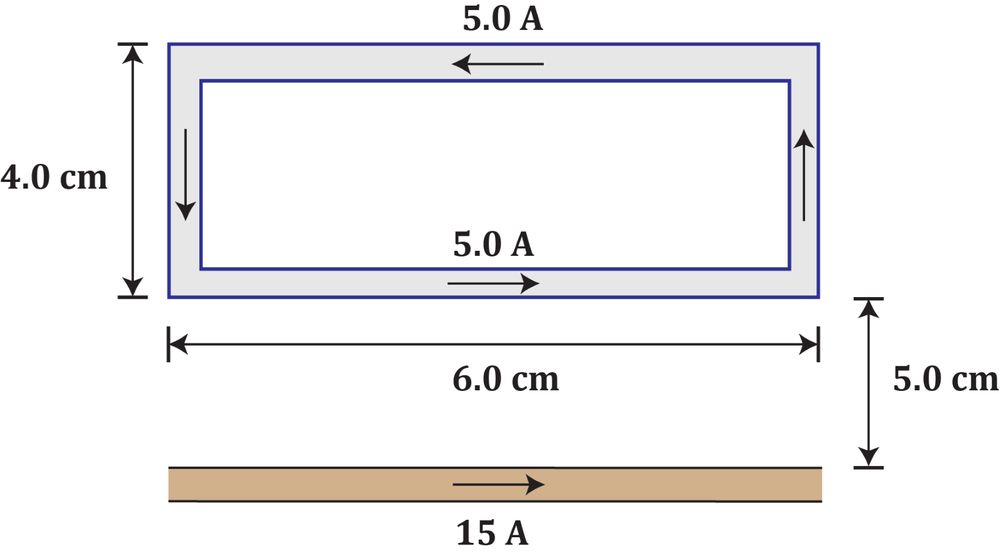- Download the worksheet to save time writing
- Start solving the practice problems
- If you're stuck, watch the video solutions
- See your summary to get more insights

Static magnetic fields result from the flow of direct current in electric power transmission systems. A researcher studying the hazards of magnetic fields placed a tesla meter 15.0 meters below a transmission line crossing the university campus. i) What will be the reading on the tesla meter if the transmission line carries a steady current of 100.0 A. ii) Determine the ratio of the measured magnetic field to the earth's magnetic field at the university campus which is 50 μT.
Three infinitely long wires are placed at the vertices of a virtual equiangular triangle with a side length of 4.5 cm. The triangle lies in the plane of the page, and the wires are perpendicular to the page. Two of the wires carry a current of 3.0 A out of the page, while the third wire carries a current of 3.0 A into the page. Calculate the magnetic field strength at the triangle's centroid.
Lead is a metal that exhibits superconductivity below a critical temperature of 7.2 K. However, if the magnetic field at the surface of a lead wire exceeds 0.15 T, the superconductivity is lost. Determine the maximum current that can flow through a straight lead wire with a radius of 2.5 mm.
If the magnetic field along the central axis measures 300 μT at a separation of 8.00 cm from a small bar magnet, determine the field strength along the central axis at a separation of 12.0 cm from the same bar magnet.
Consider the two conductors given in the diagram. The length and width of the loop are 6.0 cm and 4.0 cm, respectively. This loop carries a direct current of magnitude of 5.0 Amps. The second conductor is an infinitely long wire with a direct current of 15 Amps. Compute the net force and torque exerted by the infinitely long wire over the rectangular loop.
